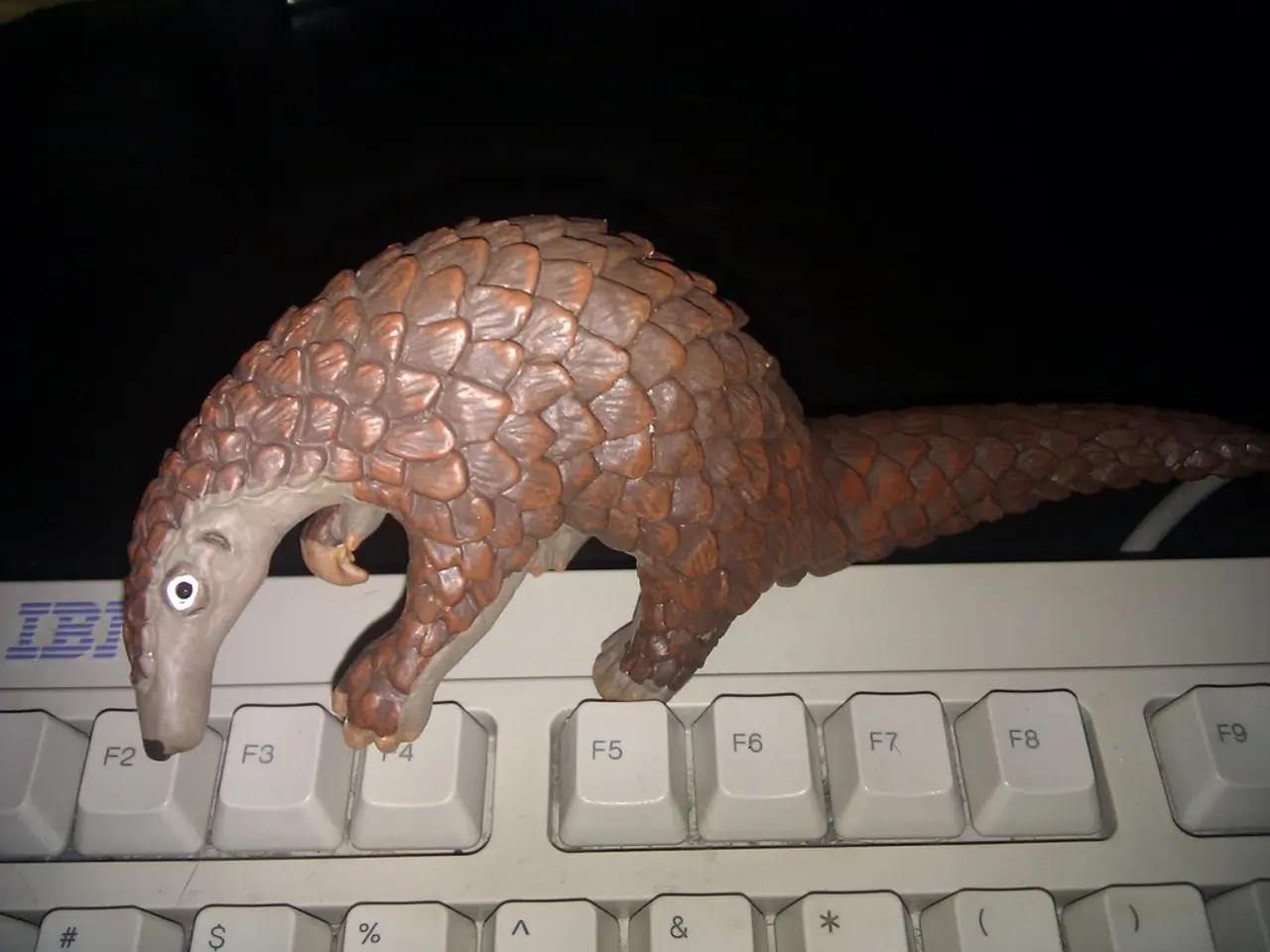"Blue-Footed Booby Highlighted: 50 Rare Species You May Be Unaware Of"
Exotic and Endangered Animals: A Glimpse into the World's Most Fascinating Creatures
From the vibrant reefs of the ocean to the dense rainforests of the world, there exists a myriad of fascinating creatures that capture our imagination and fuel our curiosity. Here, we delve into the world of some of the most intriguing and endangered animals, each unique in its own right.
The Binturong
Known as the bearcat, this large, shaggy mammal hails from the tropical rainforests of South and Southeast Asia. Covered in black fur with a grizzled silver sheen, the binturong has a long, prehensile tail that acts as a fifth hand, helping it balance and hang in trees. This elusive creature communicates with a range of chuckles, hisses, and purrs, and it smells like buttered popcorn due to a chemical in its urine and scent glands.
The Numbat
Native to southwestern Australia, the baby numbat is a tiny, soft-furred marsupial found in eucalyptus woodlands rich in termite colonies. Its distinctive white stripes across a reddish-brown coat and a long, sticky tongue make it stand out among its peers.
The Fancy Mouse
The Fancy Mouse is a domesticated breed, bred for its unique colors and friendly charm. These sociable rodents are best kept in groups as they bond with each other. They are very active and curious, enjoying tunnels, wheels, and climbing toys.
The Common Spotted Cuscus
The Common Spotted Cuscus is a medium-sized, nocturnal marsupial native to East Timor, northern Australia, and nearby islands. It has strong limbs and a long, prehensile tail, making it an expert climber. This omnivorous creature feeds on leaves, fruits, flowers, and occasionally small insects or birds.
The Panther Chameleon
One of the most colorful reptiles in the world, the Panther Chameleon is native to Madagascar. Males can shift through vivid shades of blue, green, red, orange, and yellow. This solitary and territorial reptile has 360° vision thanks to turret-like eyes.
The Nudibranch
These vibrantly colored, slow-moving creatures are found in oceans worldwide, especially in tropical and temperate reefs. Despite their delicate appearance, some nudibranchs are highly toxic to predators. Their colors can serve as warning signals, camouflage, or even mimicry of other toxic species.
The Armadillo
Depending on the species, armadillos can curl into a protective ball. They are covered in armor-like bands and have sharp claws and strong limbs, making them excellent diggers. They thrive in forests, grasslands, and even suburban areas.
The Waigeo Spotted Cuscus
This nocturnal, solitary marsupial prefers dense rainforests and mangroves, living high in the canopy to stay safe from predators. The Waigeo spotted cuscus has a soft, spotted coat, ranging from gray to reddish hues. It is endemic to Waigeo Island, part of the Raja Ampat archipelago.
The Kinkajou
This small, round, and furry creature is found in the tropical forests of Central and South America. Known for its playful and curious nature, the kinkajou loves fruit, nectar, and honey, earning it the nickname "honey bear".
The Masked Palm Civet
Native to South and Southeast Asia, the Masked Palm Civet is about the size of a house cat, with a slender body and long tail. It has a distinctive black-and-white mask-like facial markings and prefers dense forests, plantations, and even edges of villages.
The Fishing Cat
The fishing cat is a medium-sized wild cat native to South and Southeast Asia, found in mangroves, swamps, wetlands, and along riverbanks. It is a true wetland specialist and specialized hunter of fish.
The Margay
The margay is a small wild cat found in tropical rainforests, cloud forests, and dense jungles from Mexico to Argentina. It is a tree-climbing master, able to twist, leap, and run upside-down along branches.
The Coati
Native to Central and South America, the Coati is highly social, often found in bands of 10-30 individuals, especially females and young. This omnivore feeds on fruits, insects, small reptiles, and eggs.
The Ring-Tailed Mongoose
The Ring-Tailed Mongoose is slender, with sharp claws and strong limbs. Native to Madagascar, it inhabits humid rainforests and sometimes plantations. It is listed as Near Threatened due to deforestation, habitat loss, and hunting pressure in Madagascar.
The Opossum Mama
The Opossum Mama, known for its shy and scrappy appearance, is a marsupial found throughout North and South America, especially in woodlands, swamps, and urban backyards. It is an omnivore, eating fruits, insects, small animals, and even carrion.
The Selkirk Rex
The Selkirk Rex is a domesticated cat breed, famous for its soft, curly coat that looks as if it's been styled by a hairdresser. Recognized by major cat registries like TICA and CFA, the Selkirk Rex is known for being laid-back, affectionate, and playful.
The Red River Hog
The Red River Hog is omnivorous, feeding on roots, tubers, fruits, insects, small animals, and eggs. Native to West and Central Africa, it plays an important role in seed dispersal and soil aeration through foraging. Despite being listed as Least Concern, habitat destruction and hunting pose localized threats.
The Quokka
The quokka is a small, stocky marsupial native to Rottnest Island and small pockets of southwestern Australia. It is famous for its seemingly permanent "smile", earning it the nickname the happiest animal on Earth. However, it is listed as Vulnerable, primarily due to habitat loss, introduced predators like foxes and cats, and human interference.
The Pink Fairy Armadillo
Native to central Argentina, the Pink Fairy Armadillo is tiny, clawed feet allow for rapid digging. This nocturnal burrower spends most of its life underground to escape predators and extreme temperatures.
The Tree Kangaroo
The tree kangaroo is found in the rainforests of Papua New Guinea, Indonesia, and northeastern Australia. It is stocky, with strong forelimbs and broad paws for gripping branches. The tree kangaroo prefers dense, tropical canopies where it can move unseen among the branches. It is listed as Vulnerable due to deforestation and hunting.
The Pesquet's Parrot
The Pesquet's Parrot is named after the French ornithologist Bernard Pesquet. Native to the lowland and hill rainforests of New Guinea, it has jet-black plumage and a vivid scarlet chest and belly. It is listed as Vulnerable due to habitat loss and hunting for the illegal pet trade and ornamental feathers.
The Malabar Giant Squirrel
Native to the tropical forests of southern India, especially the Western Ghats, the Malabar Giant Squirrel is an arboreal mammal with striking multicolored fur and large eyes and sharp claws for navigating the treetops.
The Rock Hyrax
The Rock Hyrax is native to Africa and parts of the Middle East. Small, furry, and about the size of a rabbit, it blends perfectly with rocky surroundings due to its brown or gray coat. It is an herbivore, feeding on grasses, leaves, fruit, and bark.
The Lynx
The lynx is a solitary, elusive hunter found in the boreal forests and snowy mountains of Europe, Asia, and North America. It thrives in remote, cold wilderness where silence rules the land.
The Asian Golden Cat
The Asian golden cat is a medium-sized wild cat native to Southeast Asia, found in dense tropical and subtropical forests. It is solitary, elusive, and mostly nocturnal, with large eyes and sharp hearing.
The Albino Owl
Albino owls are extremely rare and more vulnerable in the wild. Their bright plumage reduces camouflage, making them easier targets for predators. Despite their survival rates being lower compared to normally colored owls, they retain the keen senses of sight and hearing typical of owls.
The Nudibranch Diet
The nudibranch diet primarily consists of sponges, anemones, and bryozoans. As indicator species, nudibranchs reflect the health of their marine ecosystems. They can perform autotomy, dropping parts of their body to escape predators.
Conservation Efforts
Conservation efforts focus on protecting forest habitats and reducing hunting pressures. These efforts are crucial for preserving the unique and fascinating creatures that call our world home. From the vibrant nudibranchs to the elusive lynx, each species plays a vital role in maintaining the balance of our ecosystems. Let us strive to protect and cherish these incredible creatures for future generations to marvel at.








